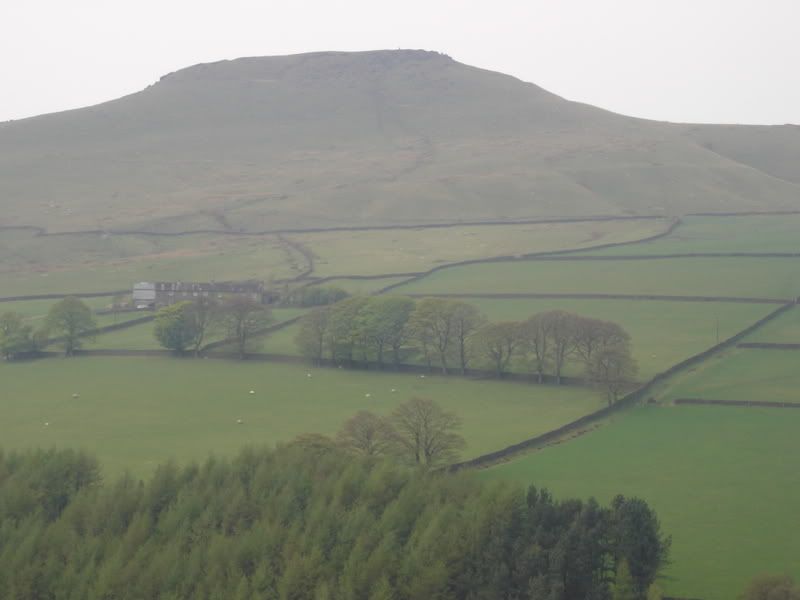Now many apologies here because I failed to take pictures at Wildboarclough itself and the few I did take of the church did not come out (- very indicative of my skills with a camera). So I am afraid you will have to rely on a description. (See Grahams picture in a later post). As you drive along the valley there is an increase in the number of trees and when you reach the village, with a turn off to the left it feels much more closed in and 'dark'. There is a row of terraced cottages on the bottom road with arch style windows. Taking the road off to the left you climb out of the bottom passing several stone houses on the left, a red phone box, a three storey impressive residence behind gates named 'The post office' and then the church set back from the road. This is where we parked.
There is a photo of the old post office along with other views around the valley as well as information about Wildboarclough and Macclesfield Forrest on this site :- http://www.cressbrook.co.uk/scripts/towns/villages.php?placename=Macclesfield&topX=3930&topY=3760&bottomX=3890&bottomY=3720&map=tile7&dist=8This
According to one of my favourite sites - Genuki, St Saviour was founded in 1873 as a chapel to St. Stephen and became a parish church in 1906. Margaret and Graham told me that there was a delay from the first stone for the new church being laid to the completion of the building because of a dispute. Richard Remington is the first baby to be baptised here. The church is very pretty, it is a reddish colour. It has little gable windows in the roof and a friendly ambiance. But personally I think I preferred the wildness and openness of St. Stephens. The overall impression of Wildboarclough was dark green. Whilst there we were treated to the aroma of freshly cut grass as a lady was mowing the church grounds, a very skilled and intricate job given the steep slopes and gravestones to negotiate.
We walked down the hill, leaving the church via two steep and narrow stone steps (see correction in Grahams picture in a later post). Retracing our steps we followed the brook on the other side of the lane. There was an old iron gate in the wall and a single stone slab bridging the 'chasm' - they must have had no fear crossing that as it wasn't very wide. I later wondered if this led to Crag cottage.
Continuing our journey we climbed out of the bottom, turning left again passed Crag Hall to follow the high road back along the valley towards Dryknowle farm. We parked up part way along to have our sandwiches. So you can image us eating our lunch with the view below. Drinking in the fresh air. This is Shutlingsloe the highest peak in Cheshire and we could make out some successful people who had made it to the top - comment by me "Are there trees up there?", then they moved. Another interesting sighting was two mallard ducks waddling across the field below us.

The view below shows the lane going up to Dryknowle farm - in the trees.

This is Broughsplace.

No comments:
Post a Comment